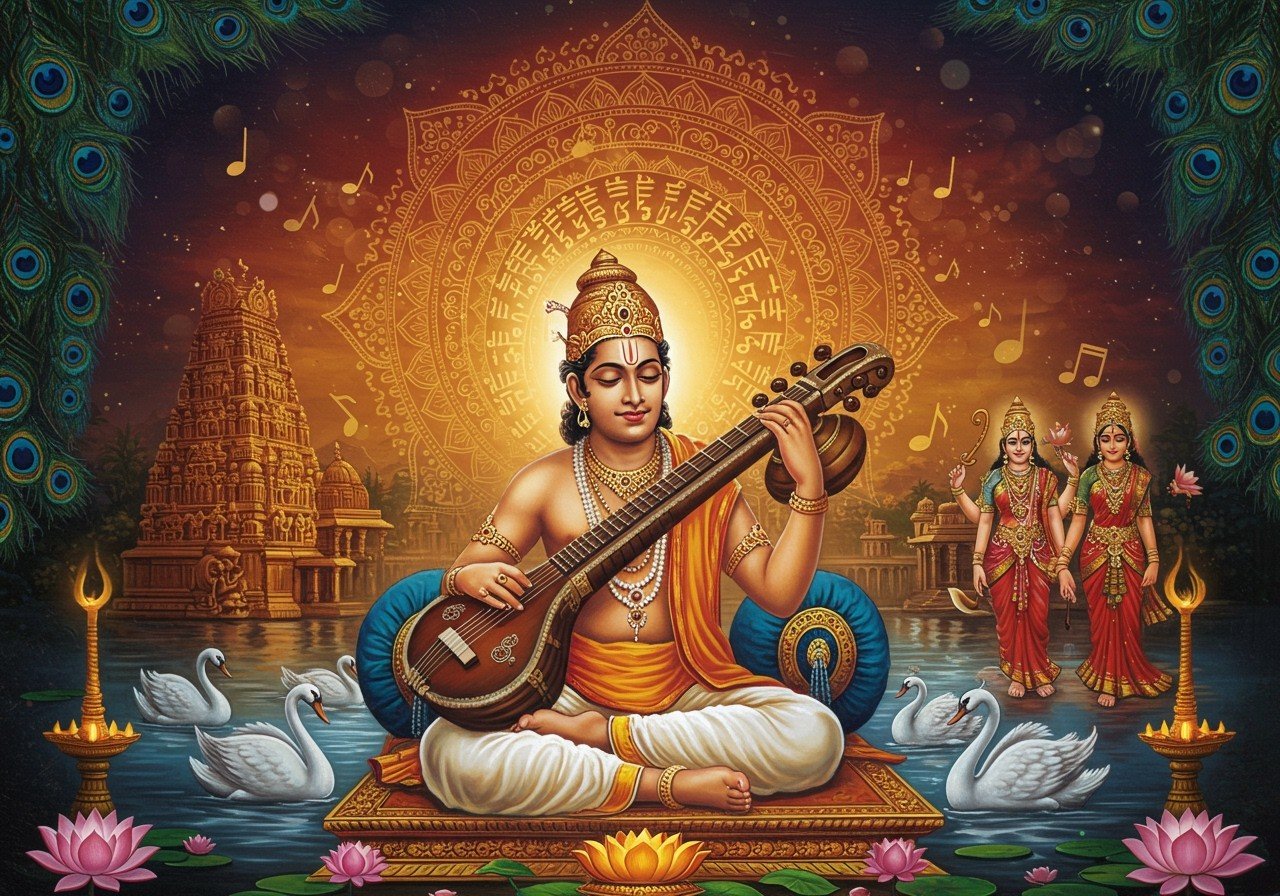
Saint Tyagaraja (1767-1847), a name synonymous with devotion and musical brilliance, remains one of the most revered figures in Carnatic music. His life, a harmonious blend of spirituality and artistic expression, continues to inspire musicians and devotees worldwide. Let’s delve into the life, works, and enduring legacy of this remarkable composer.
Early Life and Musical Journey
Born in 1767 in Thiruvarur, Tamil Nadu, Tyagaraja, whose full name was Kakarla Tyagabrahmam, was raised in an atmosphere steeped in scholarship and music. His father, Rama Brahmam, a learned man and musician himself, played a pivotal role in shaping Tyagaraja’s early musical inclinations. Under the tutelage of Sonti Venkataramanayya, Tyagaraja’s formal musical training began, laying the foundation for his extraordinary journey. From a young age, a profound devotion to Lord Rama permeated his being, deeply influencing his musical creations. This devotion became the very essence of his compositions, weaving a tapestry of spiritual and artistic beauty.
Compositional Style and Innovations
Tyagaraja’s compositional style was unique, marked by a seamless fusion of lyrical beauty and profound spiritual insights. He primarily composed in Telugu, a language known for its expressive power, enabling him to convey deep emotions with grace and simplicity. A true innovator, Tyagaraja pioneered the use of certain ragas and talas, enriching the Carnatic tradition. He also played a significant role in popularizing kritis, a compositional form that has become a cornerstone of Carnatic music. Among his most celebrated works are the Pancharatna Kritis (five gems), each a testament to his musical genius.
You can enhance your puja experience with authentic products from Poojn.in. We offer a wide variety of tilak, incense, and other puja items to deepen your spiritual practice.
Spiritual Devotion and Legacy
Tyagaraja’s unwavering devotion to Lord Rama was not merely a personal sentiment; it was the very essence of his life and music. An integral part of the Bhakti movement in South India, he used his musical gifts as a medium to express and disseminate spiritual ideas. His legacy is celebrated each year at the Tyagaraja Aradhana festival in Thiruvaiyaru, an event that draws musicians and devotees from across the globe, paying homage to his profound contributions. This annual gathering is a vibrant testament to the enduring power of his music and the reverence he continues to command. You can read more about Krishna and his significance on our blog here and here.
The Final Curtain: Tyagaraja’s Passing
Tyagaraja departed this world in 1847, his later years characterized by a life of profound simplicity and unwavering devotion. It is believed that he was graced with a vision of Lord Rama shortly before his passing, a fitting end for a life so deeply intertwined with the divine. While historical records offer limited details about the exact circumstances of his death, leading to some debate, the profound impact of his passing on his followers and the Carnatic music community is undeniable. His departure marked the end of an era, but his musical and spiritual legacy continued to resonate.
Musical Influence and Contemporary Relevance
Tyagaraja’s influence on Carnatic music remains profound and pervasive. His compositions are not mere relics of the past; they form a vital part of contemporary classical music education and are frequently featured in modern performances. His work has transcended the boundaries of Carnatic music, influencing other Indian classical music forms and even finding resonance in global musical traditions. The spiritual messages embedded within his music continue to resonate deeply with individuals navigating the complexities of balancing tradition and modernity in today’s world. His music offers solace, guidance, and a connection to a rich spiritual heritage.
FAQs: Delving Deeper into Tyagaraja’s Life and Music
Many questions arise about Tyagaraja’s life, so let’s look at some of the most common queries. Who was Saint Tyagaraja? He was a renowned composer of Carnatic music, celebrated for his deep devotion to Lord Rama. What defines his musical legacy? His extensive body of work, including around 600 kritis, stands as a testament to his genius. How did Tyagaraja pass away? His death, which occurred in 1847, is often viewed as a union with the divine, reflecting his lifelong spiritual journey. Why is his music so significant? Tyagaraja’s music is revered for its seamless blend of devotion and artistry, continuing to inspire musicians and listeners alike. What is the Tyagaraja Aradhana Festival? This annual festival, held in Thiruvaiyaru, is a vibrant celebration of Tyagaraja’s life and works, bringing together musicians from around the world to honor his contributions. Where was Tyagaraja born? He was born in Thiruvarur, Tamil Nadu, a place that holds special significance for his followers. Did Tyagaraja have disciples? Yes, he mentored several disciples who played a crucial role in preserving and propagating his musical and spiritual teachings, ensuring that his legacy continued to flourish. Learn more about the Govindaraja Temple and its significance on our blog.


